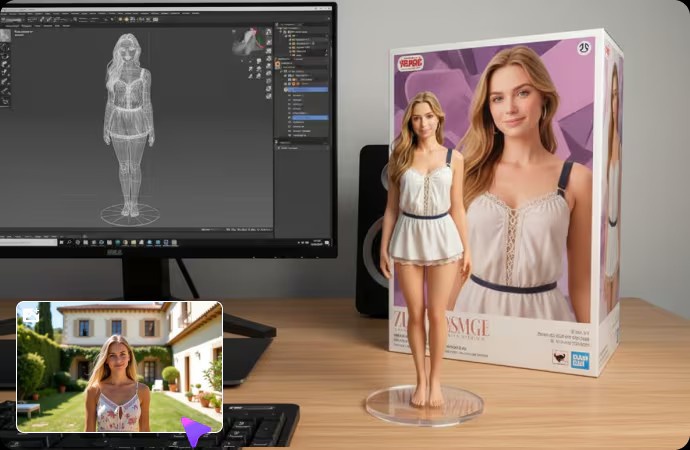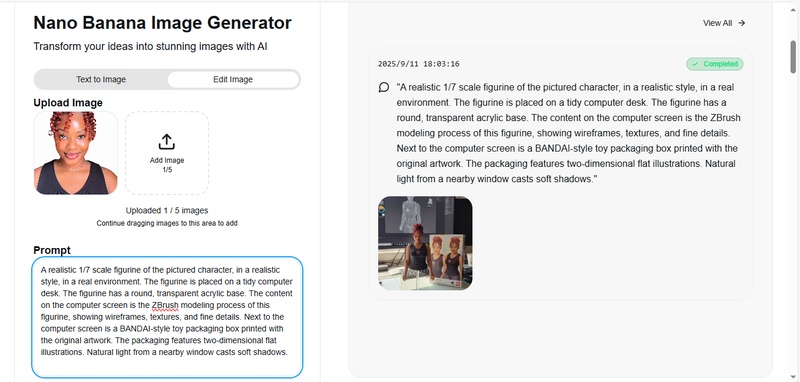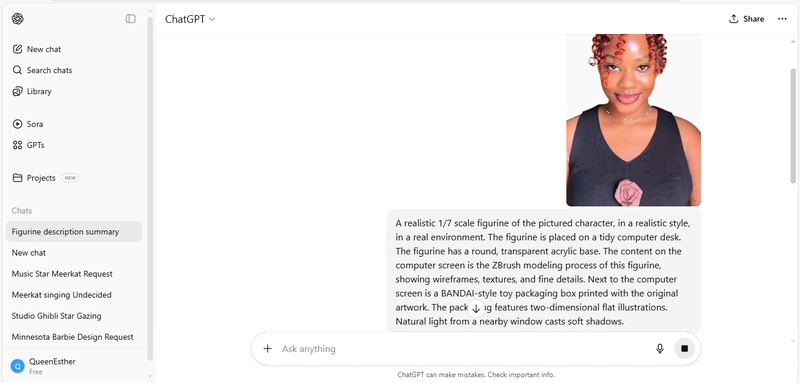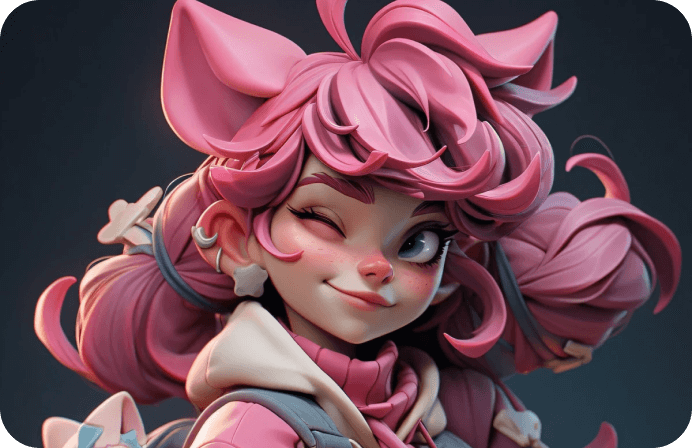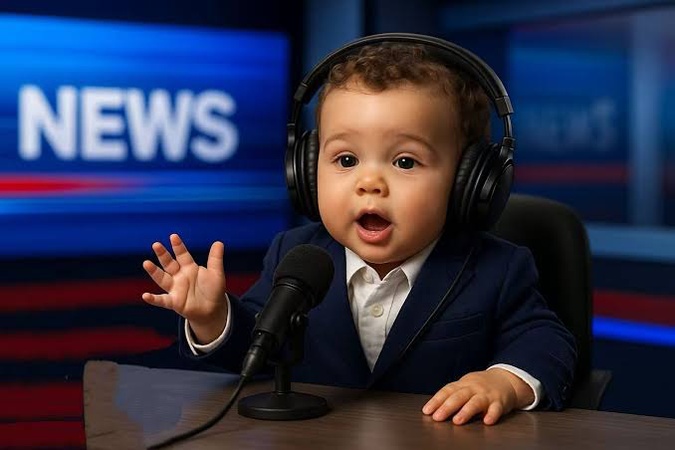AI tools have democratized 3D design, allowing anyone to create stunning visuals without needing to learn complex softwares. What once took days of manual labor can now be accomplished in seconds. Users can generate a wide range of figurine styles. We aim to discuss how to make an AI 3D figurine.
Part 1: Best Prompt to Make 3D Figurines
Creating the perfect prompt for an AI 3D figurine is a combination of art and science. The goal is to provide enough specific detail for the AI to generate a highly realistic and customized image that looks like a genuine collectible. Based on the viral "Nano Banana" trend and other successful AI-generated figurines, here is a breakdown of the key elements and best practices for crafting an effective prompt.
1 Best Prompt Formula for AI 3D Figurines:
The best prompts are highly specific, descriptive, and reference real-world objects or styles. A vague prompt like "make a figurine of me" will likely result in a generic image. A detailed prompt that describes the scale, setting, style, and packaging will produce a photorealistic masterpiece.
2 Key elements:
Here are the essential components you should include in your prompt, along with examples:
The Core Command: Start with a clear instruction for the AI. Example: "A realistic 1/7 scale figurine of the pictured character..."
The Subject and Style: Specify who or what the figurine is and what artistic style you want.
- Subject: Use a phrase like "the pictured character" or "a realistic figurine of a [your pet's name]."
- Style: Be specific about the aesthetic. "realistic style," "chibi," "anime," "cartoon-like," "Funko Pop," or "retro 80s."
The Base and Pose: Describe how the figurine is standing and its pose. Base: A transparent acrylic base is a popular choice for a professional, collectible look. Example: "...stands on a round, transparent acrylic base, with no text on the base."
Pose: Mention a specific action or emotion. Example: "...dynamically posed in a fighting stance," or "...smiling and holding a coffee cup."
The Environment/Setting: Place the figurine in a real-world context to add to the realism. Example: "...placed on a sleek wooden computer desk." or "...on a tiled floor in a modern room."
The Background Details (Crucial for Realism): This is where you elevate your prompt from good to great. Add subtle, realistic details that make the image look like a professional product photo.
- Computer Screen: A very popular and effective detail is to show a 3D modeling program on a computer screen in the background. This tricks the eye into believing the figurine is a real, designed object. Example: "...with a monitor displaying the ZBrush sculpting process of this figurine, showing wireframes, textures, and fine details."
- Lighting: Add a description of the lighting to enhance the atmosphere. Example: "...Natural light from a nearby window casts soft shadows, highlighting the model's textures and craftsmanship."
The Packaging and Branding: This element seals the deal on the "collectible" look. Example: "...Beside it, a BANDAI-style toy packaging box features vibrant 2D illustrations matching the figurine." or "...a glossy commercial packaging box with a transparent window and a blister insert showing the figure inside."
Brand Reference: Referencing real brands like "BANDAI-style," "SIDESHOW COLLECTIBLES," or "Good Smile Company" helps the AI understand the exact aesthetic you're going for.
3 Here is a template you can use and customize:
"A realistic 1/7 scale figurine of the pictured character, in a realistic style, in a real environment. The figurine is placed on a tidy computer desk. The figurine has a round, transparent acrylic base. The content on the computer screen is the ZBrush modeling process of this figurine, showing wireframes, textures, and fine details. Next to the computer screen is a BANDAI-style toy packaging box printed with the original artwork. The packaging features two-dimensional flat illustrations. Natural light from a nearby window casts soft shadows."
Part 2: How to Make an 3D Figurines | Google Nano Banana
An AI 3D figurine is a digital image of a three-dimensional model created using artificial intelligence. This technology has become widely popular due to its ability to transform a simple photo into a photorealistic, collectible-style AI 3d figure or different 3d figures with remarkable speed and detail.
How to Make an AI 3D Toy from an Image using Edimakor AI 3d Figure Generator:
Step 1: Launch the Edimakor software on your computer, go to the Toolbox, select “Image” and select “Reference Image.”
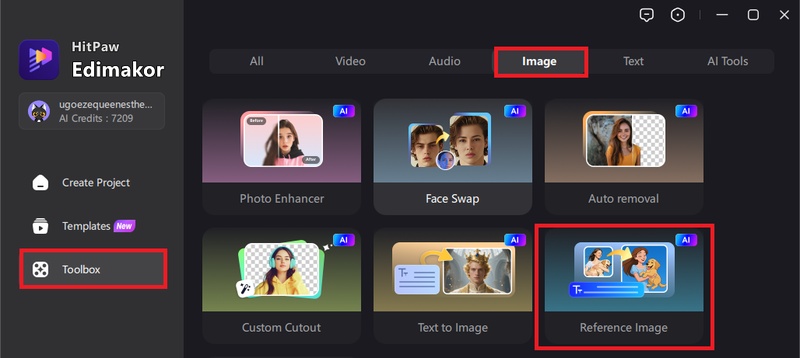
Step 2: Pick the Nano Banana AI model, upload your photo, and enter your prompt.
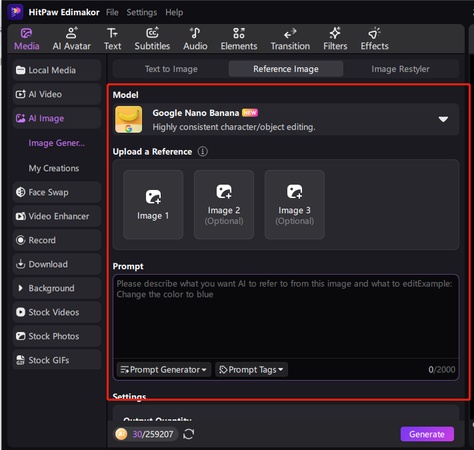
Step 3: Scroll down to select output quantity and hit the “Generate” button
Step 4: Find your result in “ My Creation” and right-click it to locate its file location. Or, drag and drop it to the timeline and hit the “Export” button to save and share.
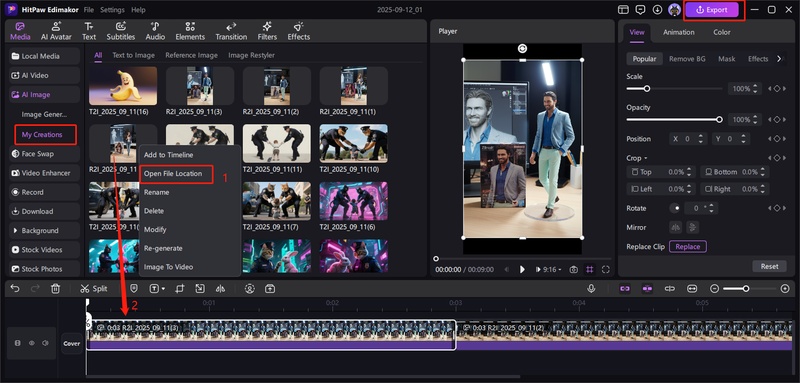
How to Make an AI 3D Toy from Text with Edimakor Text to image feature:
Step 1: On the Edimakor AI software, go to the Toolbox, select “Image” and select “Text to Image.”
Step 2: Enter your prompt and select style.
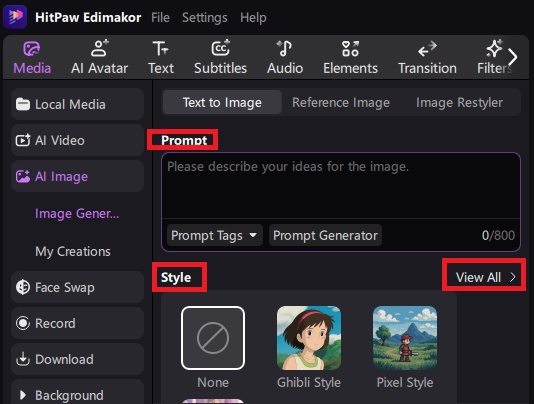
Step 3: Scroll down to select picture resolution, aspect ratio and output quantity before you hit the “Generate” button.
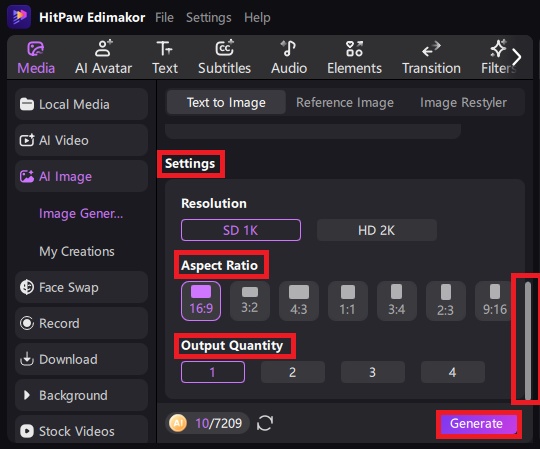
Step 4: Drag and drop your result to the timeline and hit the “Export” button to save and share.
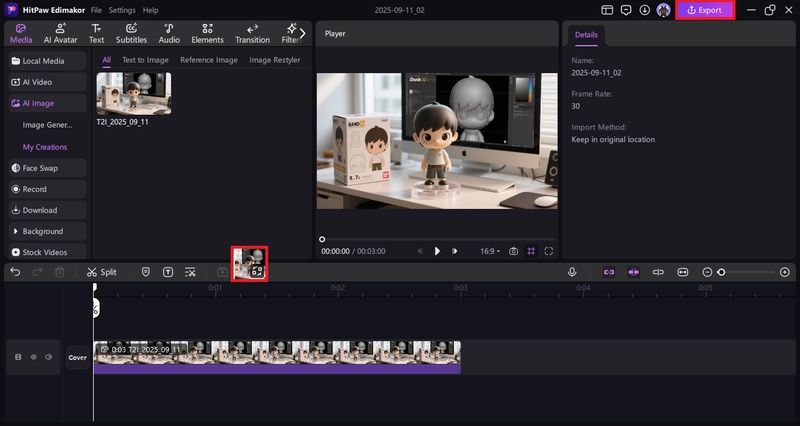
How to Make an AI 3D Figurine Video from Image Using Edimakor:
Step 1: On the Edimakor AI software, go to the Toolbox, select “Video” and select “ Image to Video ”.
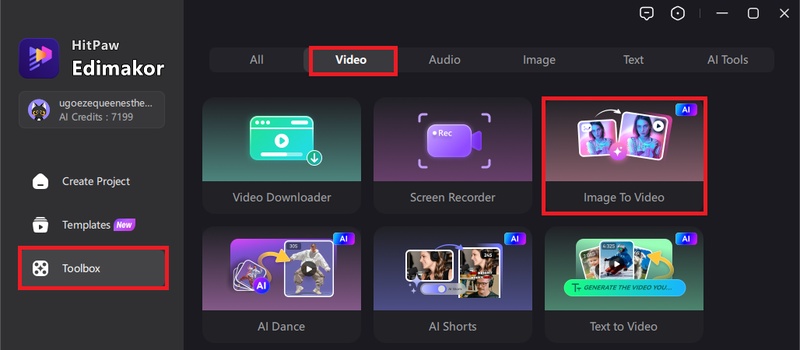
Step 2: Upload your photo and crop it by selecting aspect ratio.
Step 3: Scroll down to enter prompt and select video duration and resolution.
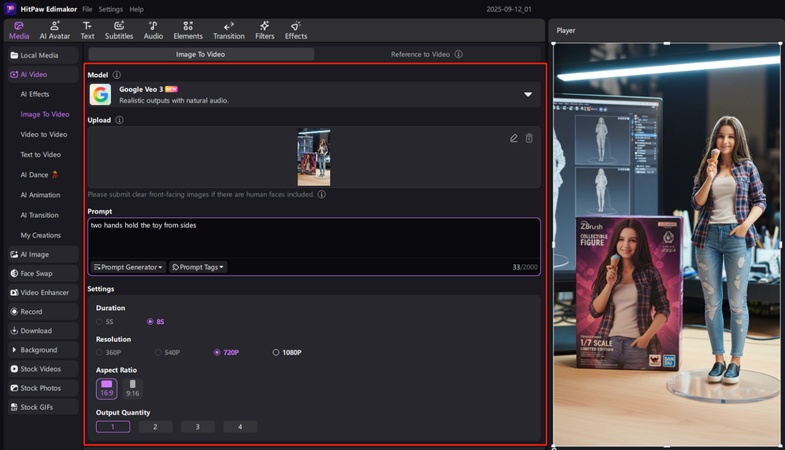
Step 4: Scroll down again and toggle the “Auto Sound” button before hitting the “Generate” button.
Step 5: Drag and drop your AI 3D statue statue result to the timeline and hit the “Export” button to save and share.
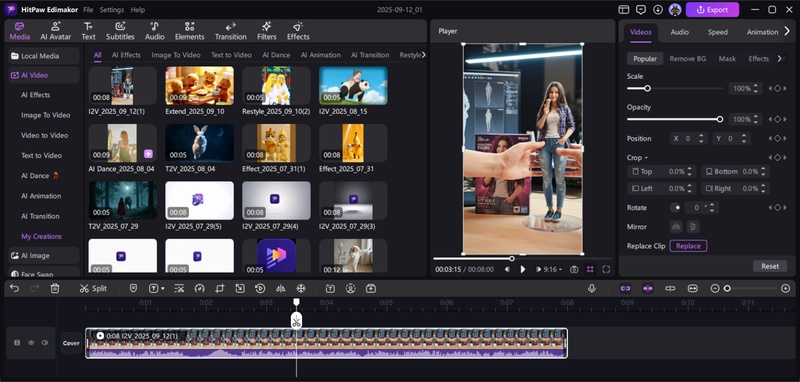
How to Make an AI 3D Figurine Video from Text Using Edimakor:
Step 1: On the Edimakor AI 3D toy generator, go to the Toolbox, select “Video” and select “ Text to Video “.
Step 2: Enter your prompt and select video duration, resolution and aspect ratio.
Step 3: Scroll down to toggle the “Auto Sound” button before hitting the “Generate” button.
Step 4: Drag and drop your AI 3d toy result to the timeline and hit the “Export” button to save and share.
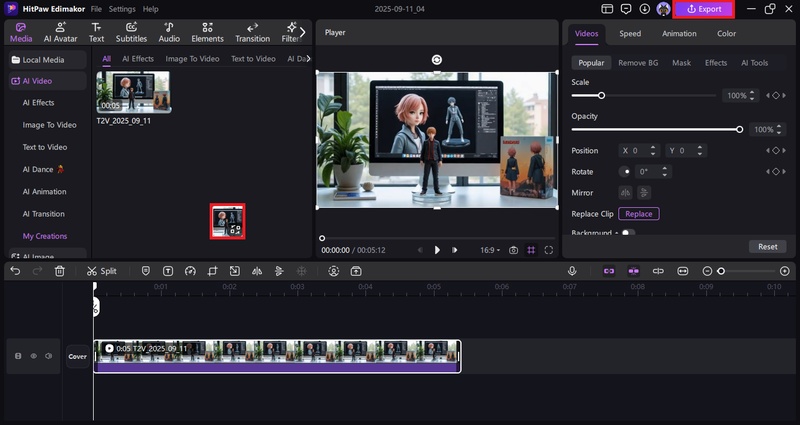
Part 3: How to Make an AI 3D Figurine | Gemini Google Nano Banana
Making an AI 3d print is a straightforward and accessible process that has become incredibly popular, largely thanks to tools like Google's Gemini 2.5 Flash Image (nicknamed "Nano Banana") which is a figurine 3d printer. The beauty of this technology is that it doesn't require any prior knowledge of AI 3d artist or complex software. Here is a step-by-step guide on how to create a photorealistic AI 3d anime and AI 3d action figures from a photo and a prompt:
- Upload Your Image and Craft Your Prompt.
-
After providing your image and prompt, click "Generate." In just a few seconds, the AI will create a photorealistic image.

- Review the result and, if needed, tweak your prompt to adjust elements like the pose, expression, or background details.
- Save and Share.
Part 4: How to Make an AI 3D Figurine | ChatGPT 4o
ChatGPT, combined with its integrated image generation model like DALL-E 3, can be used to create AI 3D figurine images. It is a powerful tool for generating highly customized and creative visual concepts. Here's how to make an AI 3D figurine with ChatGPT:
- Open a new conversation in ChatGPT and ensure you have access to an image-generation model (e.g., DALL-E 3).
- Provide a detailed prompt.
-
Once you're satisfied with your prompt, ChatGPT will use DALL-E 3 to generate the image.

- Download and Share.
Conclusion
In this guide, we have discussed the processes that have democratized 3D design, allowing anyone to create stunning, professional-looking visuals with minimal effort, blurring the line between digital artistry and physical collectibles. The core concept behind an AI 3D figurine is the use of a powerful AI model that can understand both visual and text-based prompts. The Edimakor AI is a powerful AI 3D toy generator. The software guarantees quality, speed, affordability and ease of use.
Leave a Comment
Create your review for HitPaw articles
